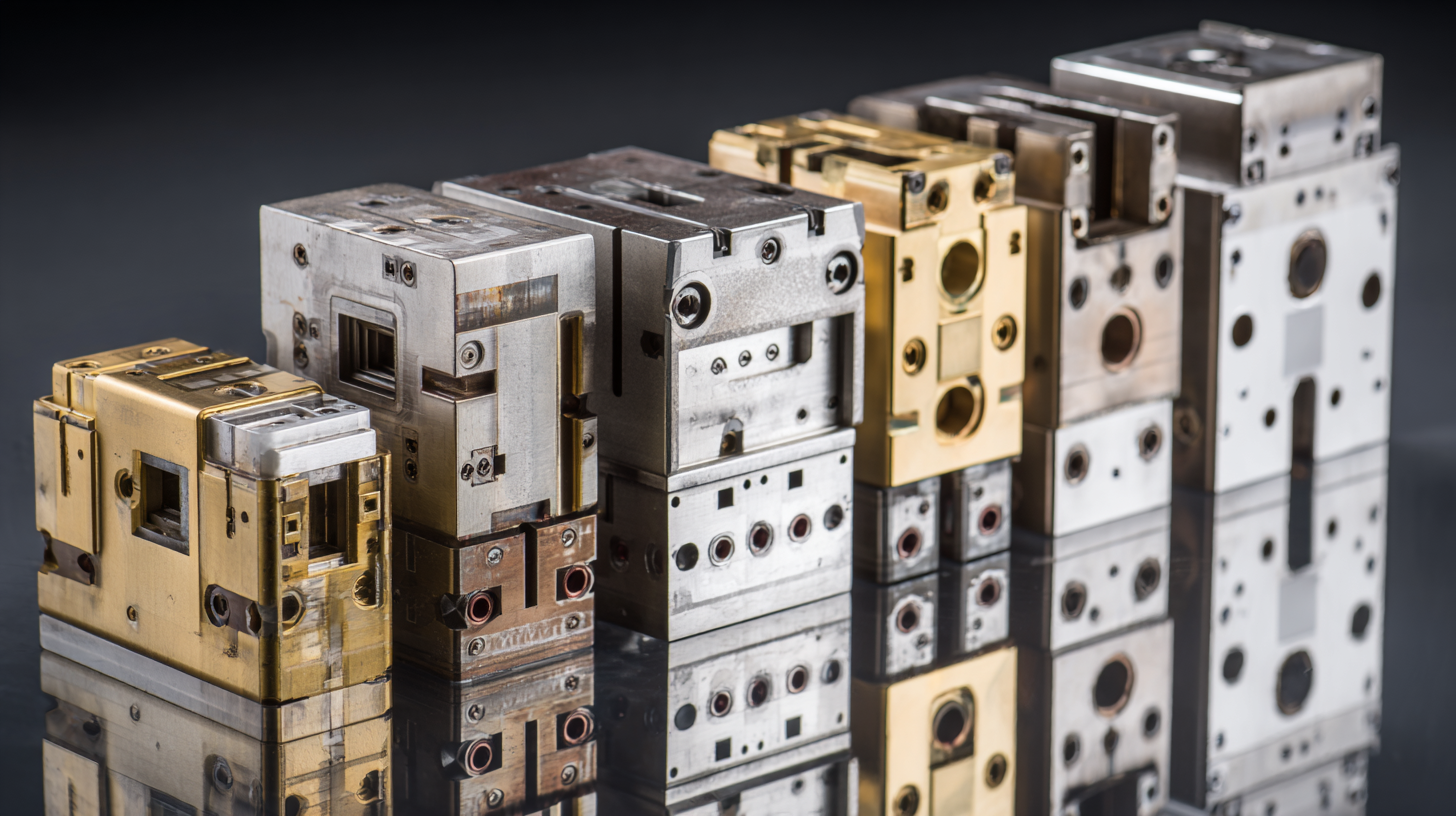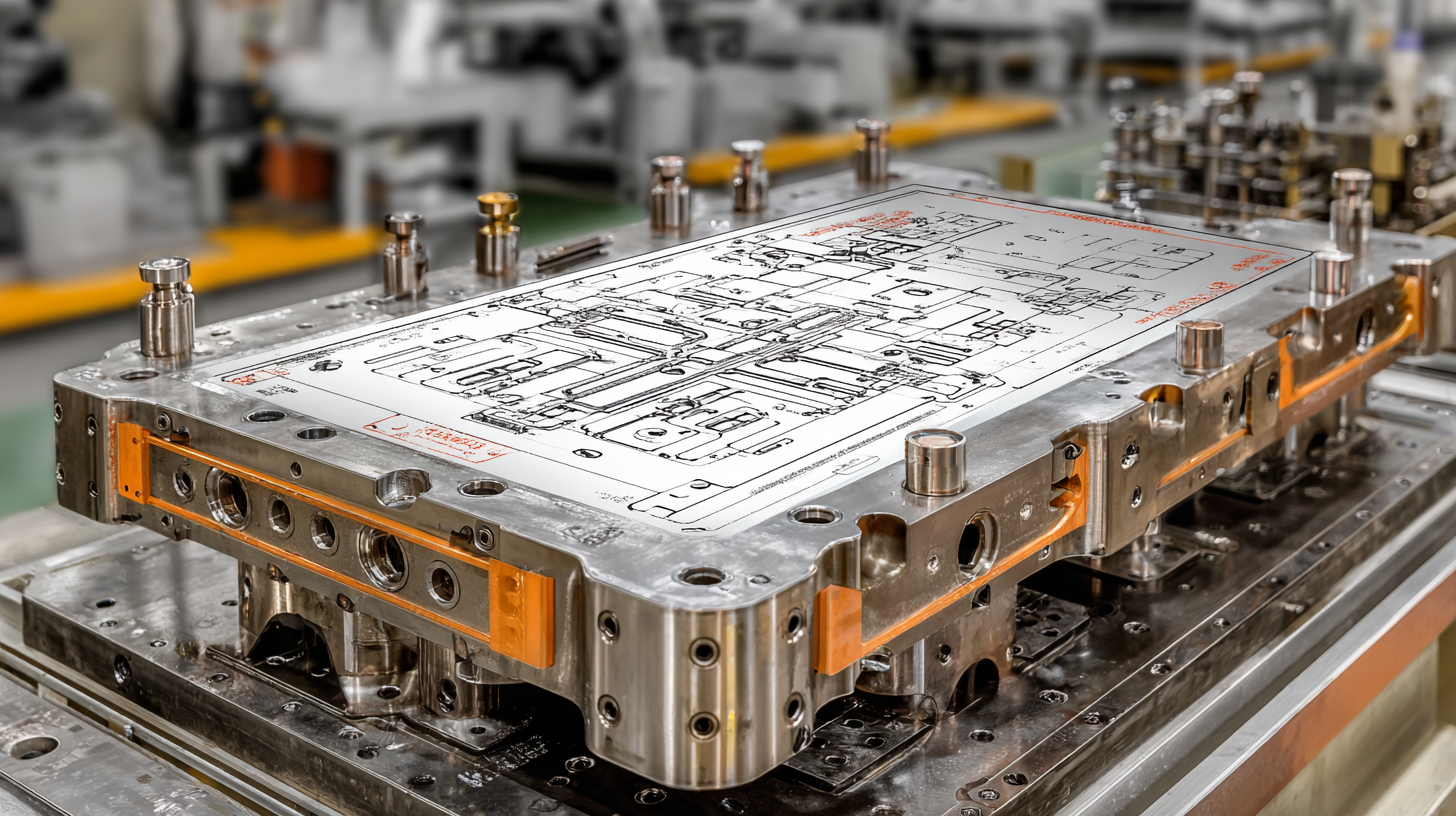
5 Compelling Reasons to Choose the Best Progressive High Speed Stamping Die for Your Production Needs
In today's competitive manufacturing landscape, selecting the right tools is paramount to achieving efficiency and quality in production. One such essential tool is the Progressive High Speed Stamping Die, known for its ability to streamline processes and enhance output while reducing costs. As China embraces the global manufacturing landscape with a focus on quality and innovation, the importance of these advanced dies becomes even more pronounced. This blog explores five compelling reasons why choosing the best Progressive High Speed Stamping Die can significantly impact your production needs, ensuring not only superior performance but also a reliable partnership with trusted manufacturers. As we delve into the advantages of these dies, it becomes clear that investing in high-quality stamping technology is essential for businesses aiming to thrive in an increasingly demanding market.

The Impact of Precision: How Progressive High-Speed Stamping Dies Enhance Production Quality
In the world of manufacturing, precision plays a pivotal role in determining the overall quality of production outputs. Progressive high-speed stamping dies are engineered to deliver exceptional accuracy, allowing for intricate designs and tight tolerances that traditional methods may struggle to achieve. This level of precision not only reduces waste and operational costs but also ensures that each component meets stringent quality standards, which is vital in industries such as automotive and aerospace.
Moreover, the use of progressive high-speed stamping dies significantly enhances the efficiency of production processes. These dies facilitate high-volume runs, producing parts at a faster rate without compromising on quality. This means manufacturers can respond more quickly to market demands while maintaining the integrity of their products. Ultimately, the investment in high-quality progressive stamping technology translates to superior performance, reduced rework, and enhanced customer satisfaction in a competitive marketplace. Through precision engineering, manufacturers can confidently produce components that meet the highest expectations and regulations.
Cost Efficiency: Analyzing the Long-Term Savings of Using Advanced Stamping Technologies
When considering advanced stamping technologies, the long-term cost efficiency they offer cannot be overlooked. The implementation of progressive high-speed stamping dies allows manufacturers to significantly reduce production times while enhancing precision and minimizing waste. This efficiency not only translates to immediate savings but also fosters a sustainable production environment by lessening the carbon footprint associated with energy-intensive processes.
Moreover, the integration of predictive maintenance technologies into stamping operations further amplifies cost efficiency. By leveraging insights derived from data analytics, manufacturers can predict equipment failures before they occur, thus avoiding unexpected downtimes and associated costs. Additionally, advancements in materials and tooling technologies are reshaping the landscape, allowing for lighter and stronger components that yield higher performance without inflating costs. These factors collectively underline the compelling reasons for choosing the best progressive high-speed stamping die tailored to specific production needs, aligning operational efficiency with sustainable manufacturing practices.
5 Compelling Reasons to Choose the Best Progressive High Speed Stamping Die for Your Production Needs - Cost Efficiency: Analyzing the Long-Term Savings of Using Advanced Stamping Technologies
| Production Method | Initial Cost ($) | Maintenance Cost Per Year ($) | Average Production Rate (units/hour) | Estimated Long-Term Savings ($ over 5 years) |
|---|---|---|---|---|
| Traditional Stamping | 50,000 | 5,000 | 100 | 0 |
| Progressive High Speed Stamping | 80,000 | 2,000 | 300 | 75,000 |
| Hybrid Stamping Solutions | 70,000 | 3,500 | 250 | 40,000 |
Speed and Throughput: Maximizing Production Output with Progressive High-Speed Dies
In today's fast-paced manufacturing environment, maximizing production output is crucial for staying competitive. Progressive high-speed stamping dies have emerged as a game-changer, primarily due to their ability to significantly enhance speed and throughput. According to a report by the Precision Metalforming Association, companies utilizing high-speed stamping technology can achieve production rates that are 30-50% higher compared to traditional stamping processes. This increase is particularly advantageous for high-volume production runs, where efficiency translates directly into cost savings and margins.
The design of progressive dies allows for multiple operations to occur in a single stroke, effectively reducing the cycle time per part. The latest innovations in die manufacturing also reduce downtime through quicker setups and changeovers. Data from the International Association of Die and Tool Manufacturers indicates that modern high-speed dies can facilitate an average of 100 strokes per minute, significantly boosting overall throughput for various applications. By investing in the best progressive high-speed stamping die, manufacturers are not just improving their speed; they are future-proofing their production lines to meet growing demands in a highly competitive market.

Material Versatility: The Role of Die Design in Processing a Range of Metals
When considering the optimal die design for high-speed stamping, material versatility plays a pivotal role. The ability to effectively process a variety of metals—including aluminum, steel, and copper—depends significantly on the precision and adaptability of the stamping die. Studies indicate that nearly 70% of manufacturers recognize that the versatility of stamping dies directly influences their production efficiency and cost-effectiveness. With progressive high-speed stamping dies, companies can easily switch between different materials without the need for extensive retooling, thereby reducing downtime and enhancing overall productivity.
Moreover, advanced die designs can accommodate varying thicknesses and complexities of materials with minimal distortion. According to industry reports, well-designed stamping dies can improve throughput by up to 30%, particularly in sectors like automotive and electronics, where the demand for lightweight yet durable parts is increasing. This adaptability not only meets the evolving needs of the market but also aligns with sustainable manufacturing practices, as manufacturers can optimize their resource use while minimizing waste. As the industry continues to innovate, selecting a high-speed stamping die that prioritizes material versatility will be essential for driving production success.

Minimizing Downtime: Benefits of Robust Design and Maintenance in Stamping Operations
When it comes to stamping operations, minimizing downtime is crucial for maintaining efficiency and productivity. One way to achieve this is through the implementation of a robust design in high-speed stamping dies. A well-designed die not only enhances the accuracy of the stamping process but also ensures durability, reducing the frequency of replacements or repairs. This leads to fewer interruptions in production, allowing manufacturers to meet their output targets consistently.
Moreover, regular maintenance of stamping dies plays a vital role in preventing unexpected failures that can lead to costly downtime. By scheduling routine inspections and servicing, companies can identify potential issues before they escalate into major breakdowns. This proactive approach not only extends the life of the dies but also helps in optimizing operational workflows. In summary, investing in high-quality stamping dies and establishing a thorough maintenance regimen can significantly minimize downtime, ultimately driving better performance in any production environment.
5 Compelling Reasons to Choose the Best Progressive High Speed Stamping Die
This chart illustrates the key benefits of investing in a robust design and maintenance for stamping operations, minimizing downtime and maximizing productivity.
